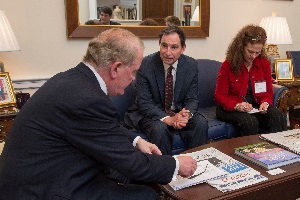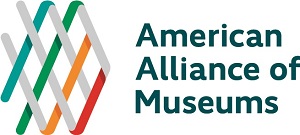Special to the Philanthropy Journal
By Joseph Klem
How does a nonprofit follow up on a dramatic five-year turnaround that upended nearly every aspect of its structure, programs and finances? After things have settled down, what’s a worthy encore performance?
That’s what we pondered as the American Alliance of Museums (AAM) prepared to roll out our new five-year strategic plan in May 2016. Per the previous five-year plan, dubbed “The Spark,” we had redesigned our business model with a new membership structure, revamped our 40-year-old accreditation program, replaced our website and membership database, launched a popular new online community, and even renamed ourselves from “Association” to “Alliance.” After we were only years away from going out of business due to declining membership and operating losses, these drastic changes had completely turned around our success: we saw our first five profitable years in a decade and an astounding 70% growth in membership.
As we charted our course for the next five years, led by our new President and CEO Laura Lott, the answer to “What’s next?” was to look beyond our organization, to the needs of the museum field itself. Because even as AAM had stabilized our organization in recent years, significant challenges confronted our member museums, which include everything from art museums to science, history and children’s museums, plus historic homes, botanical gardens, and even zoos and aquariums. In listening sessions with hundreds of museum leaders, including in-person visits to museums large and small across the United States, we heard a few recurring themes:
- The country is becoming more diverse, but most museums are not keeping pace with this diversity in their staff, their collections and programs, their boards and most importantly, their visitors.
- With their vast educational resources and experience, museums are largely underutilized in our nation’s evolving PreK-12 education ecosystem.
- With traditional funding sources at risk, museums must consider new business models to ensure their financial sustainability.
These three themes were the common thread across museum types, sizes, and locations. We made them the centerpiece of our strategic plan for 2016-2020 – areas of significant opportunity in our field – while still emphasizing important priorities and programs such as advocacy, accreditation, thought leadership, global thinking, and giving our members greater access to our staff, our content, and each other.
What’s Working?
One of the toughest parts of implementing a plan is convincing stakeholders that things are really changing. We used the term “focus areas” to describe the three areas bulleted above, and we worked hard – and continue to work hard – to resist the temptation to dilute them with add-ons. After years of trying to be everything for everyone, there’s no easy way to start saying no. We started by thinking critically about what distinguishes us from the other 40+ museum service organizations – such as our ability to convene, to forecast and assess trends in our field, and to unite museums to advocate on critical legislative and policy issues.
Another adjustment we’re making is to think more like an alliance. We can’t do it all ourselves, nor will this bring about lasting change. So we’re getting more comfortable relinquishing control. One such example is a cross-disciplinary working group to help us identify and better understand the key challenges, issues, and opportunities around diversity, equity, accessibility and inclusion in museums. Another is our stepped-up outreach to the field to gather their stories and perspectives to inform the standards and best practices that shape our excellence and accreditation programs. And to make the content of our annual conference more accessible to those who cannot afford to attend, we recruited a group of social media journalists from our field who have a strong following on Twitter, Facebook, blogs and other channels. We empowered these professionals to tell the stories in their own voice, in return for reaching more people than our own staff and budget could have reached.
Keeping Strategy Top-of-Mind
 Many of us have worked for organizations that announced a new strategic or business plan with great fanfare, only to lapse back into business as usual shortly thereafter. To ensure that our plan remains top-of-mind, we took some immediate first steps:
Many of us have worked for organizations that announced a new strategic or business plan with great fanfare, only to lapse back into business as usual shortly thereafter. To ensure that our plan remains top-of-mind, we took some immediate first steps:
- We asked staff to identify quick wins that could be accomplished in the first 90 days.
- We made some immediate tough decisions based on the plan’s priorities, such as foregoing another round of a federal grant program because it no longer aligned with our plan.
- We retooled our bimonthly magazine’s editorial calendar and our annual webinar series to align with the strategic plan focus areas and priorities.
- To walk the walk in our focus area of inclusion, we adopted new “blind” hiring practices to scrub unconscious bias from our process as much as possible. We’ve used these for every new hire since we launched our strategic plan.
- As we prepare quarterly updates for our board of directors, we organize them around our strategic goals and focus areas.
What Lies Ahead
As the African proverb says, “If you want to go fast, go alone. If you want to go far, go together.” And indeed, we’re finding that achieving the goals of our strategic plan without increases in staff or budgets is requiring new levels of collaboration with, and relinquishing some control to, a broad array of partners and stakeholders. It takes time to build consensus and to reach decisions, but we’re convinced that as an alliance, and as a museum field, we will go farther this way.
Joseph Klem is Director of Public Relations at the American Alliance of Museums. He has over 30 years’ experience as a reporter, editor, technical writer, instructional designer, webmaster and online strategist, and says unequivocally that the best of those years have been those spent working for nonprofits.







